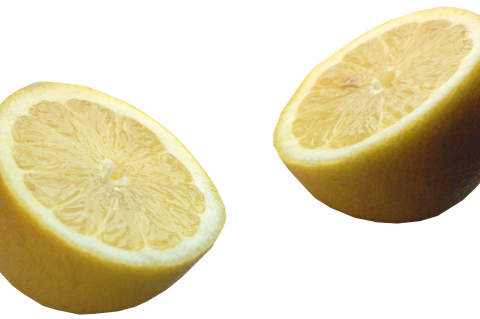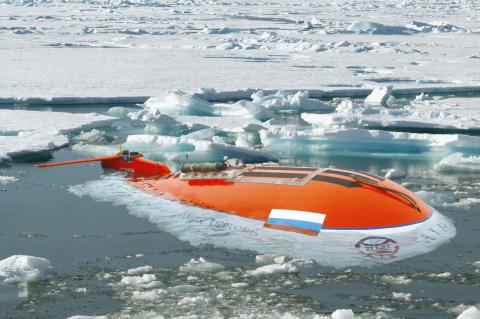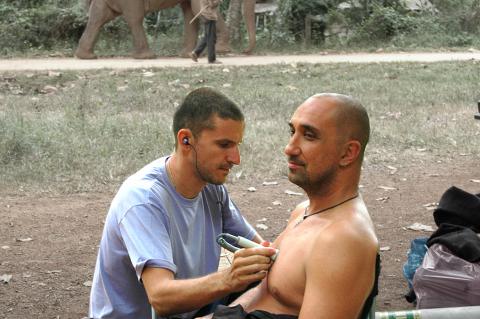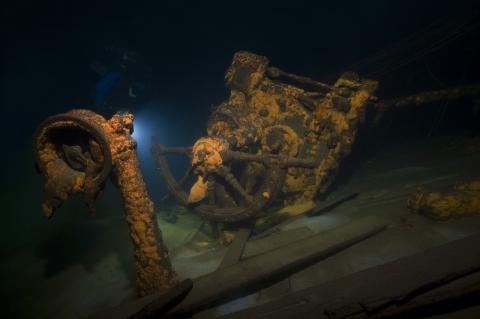X-Ray Mag #22
This issue is packed with stories on wrecks, nudibranchs, sea turtles and sharks. We visit dive destinations at Leje de Santos in Brazil and the picturesque village of Calella on the wild coast of Spain. Arnold Weisz investigates effects of the treasure trade. Learn how carbon emissions is changing the acidity of the seas and the effects on sealife. South African underwater photographer, Fiona Ayerst, reports on the tragic loss of eight Tiger sharks, three of them poached in protected waters. Andrey Bizyukin translates an interview with explorer Anatoly Sagalevich who touched bottom at the North Pole. Cedric Verdier discusses diver safety and rescue in very remote areas. Get a report on Moscow's Golden Dolphin dive show, an inside perspective of IAHD's education for disable divers, Shawna Meyer's close encounter with Humboldt squid, and tips from Kurt Amsler on shooting wrecks. We interview fine art and commercial photographer, Howard Schatz, about his latest book, H2O.
Main features in this issue include:
Acidification of the Oceans
There has been much discussion in recent years about the effect of increasing global temperatures on marine fauna (see also the last issue of this magazine). However, it has often been overlooked that the increasing acidity of the oceans may have an even greater, and more insidious, effect on marine life than just a simple rise in temperature.
The absorbtion of CO2 may have slowed global warming, but there has been a resulting change in seawater chemistry. To understand why the effect of increasing atmospheric CO2, which leads to increased absorbtion of CO2 in sea water, is important, it is necessary to understand some of the chemistry of carbonic acid and its salts. However, before we can discuss the effect of this acidity, we must have a useful description of what we mean by acidity and acid strength. The most common and useful unit to describe the magnitude of acidity is the pH value.
Claiming the North Pole
On August 2, 2007, the weather was good at the North Pole. The sea was calm, the water temperature was just -1° C, with the air at a balmy 0° C. That morning two Russian mini submarines, Bathyscaphe Mir-1 and Mir-2, were sent down and at noon, Mir-1 touched down on the seabed at 4,261m, planting the Russian flag
An exclusive interview of Anatoly Sagalevich by the journalist Gleb Cherniavsky.
Naked beauties
Most divers have seen them. Weird-looking crawling creatures with odd shapes, antennae and amorphous bodies and draped in pychedelic colours. We are not talking about aliens from outer space but nudibranchs. But why do they have to look so weird?
Naked indeed, and clearly exposed as such. How do they manage to survive in a brutal world full of hungry predators?
Photographing Wrecks
A photographer’s heart always seems to beat a little faster when it comes to taking pictures of sunken ships and aircraft. So, how do you become successful in shooting wrecks? Granted, it is not entirely straight forward, but if you take the following advice and guidelines to heart, you will surely achieve good results.
The challenge in shooting wrecks is that it often involves shooting at large distances, and that the circumstances are rarely optimal when it comes to current, visibility and depth. With the right equipment and good planning it is, however, possible to get a handle on the challenge.
Rescue in Remote locations
Do you plan to explore a deep virgin wreck? Is it your dream to discover a unique cave system deep in the jungle? Have you heard about a Blue Hole miles off shore and want to give it a try? In any case, chances are you’ll be diving in a remote location where emergency medical systems are not much more frequent and up-to-date than traffic lights in the Himalayas.
What constitutes an emergency and what kind of emergency may I face?
What do I need to bring in order to reasonably deal with possible emergencies?
In other words: How remote is remote, and is it necessary to have a physician present 24/7?
The Hunt For S8
Below some ragged pieces of wreckage lying on the bottom beside the hull, I see something a little out of place. It’s more polished and more regular in its outline. I carefully descend and remove the pieces of metal that hide it. My colleague, Marcus Runesson, is above me providing ample light, making my task much easier.
Together, we lifted the heavy plate and placed it beside the C on the deck of the hull, beside the submarine’s fin. Marcus and one of the other divers of our team, Johan Alexandersson, carefully, positioned them as they once were placed by the proud crew. We all paused a moment—all of us caught by the sudden seriousness of what we were now doing. With this find, we were sure that this was the Soviet submarine S8—missing since October 1941. Yet another of the many Soviet submarines lost in the depths of the Baltic is found and identified.
Vis - Croatia
If there is any hidden secret in the Mediterranean, it is the island of Vis. For many years, it was a forbidden and restricted military area. It was not until 1991, when the iron curtain finally came down, that it was opened up for tourism and diving. On Vis, small picturesque port towns and spectacular wrecks, drop-offs and caverns are waiting to be discovered by divers.
If there is any hidden secret in the Mediterranean, it is the island of Vis. For many years, it was a forbidden and restricted military area. It was not until 1991, when the iron curtain finally came down, that it was opened up for tourism and diving.









